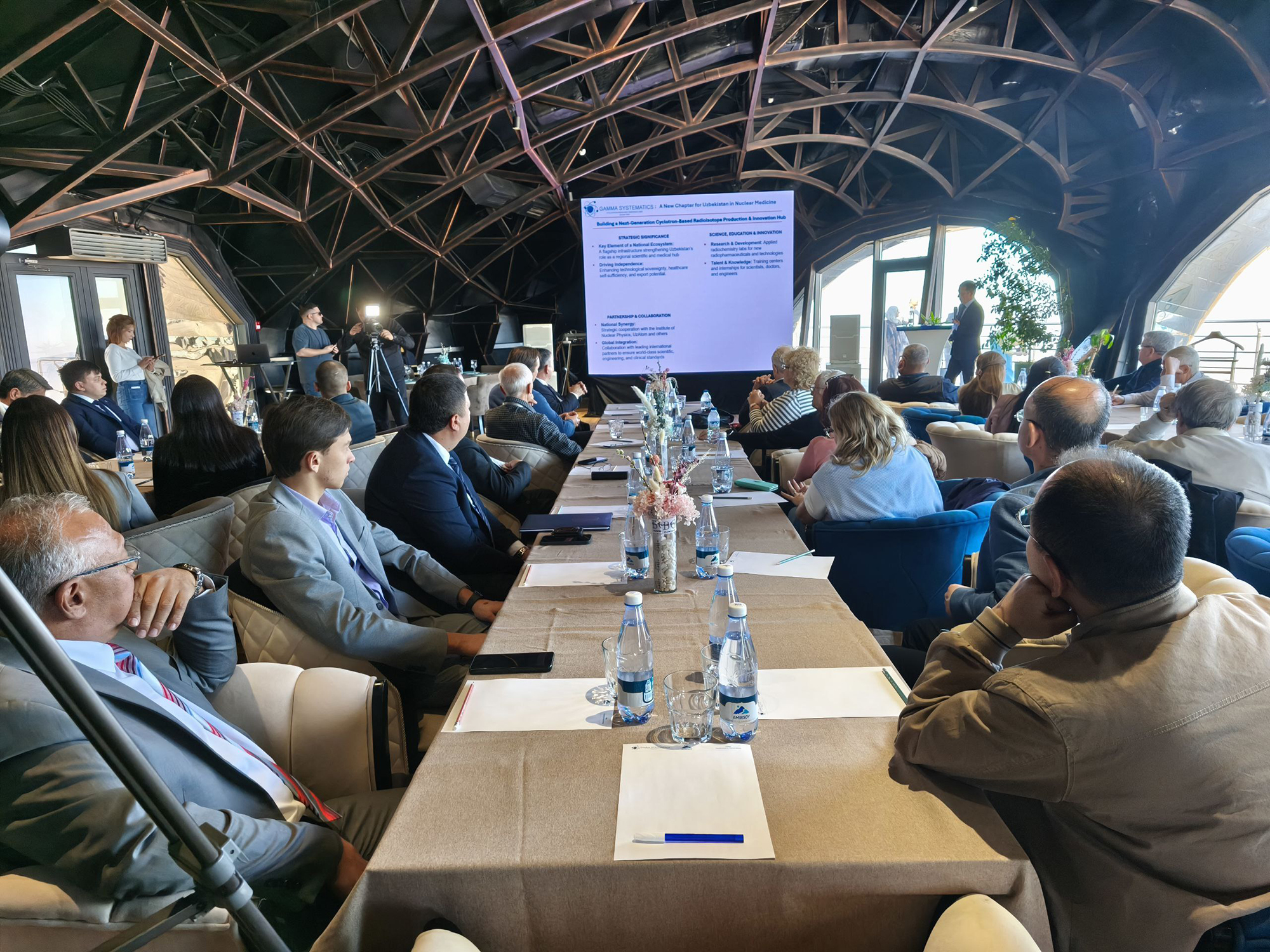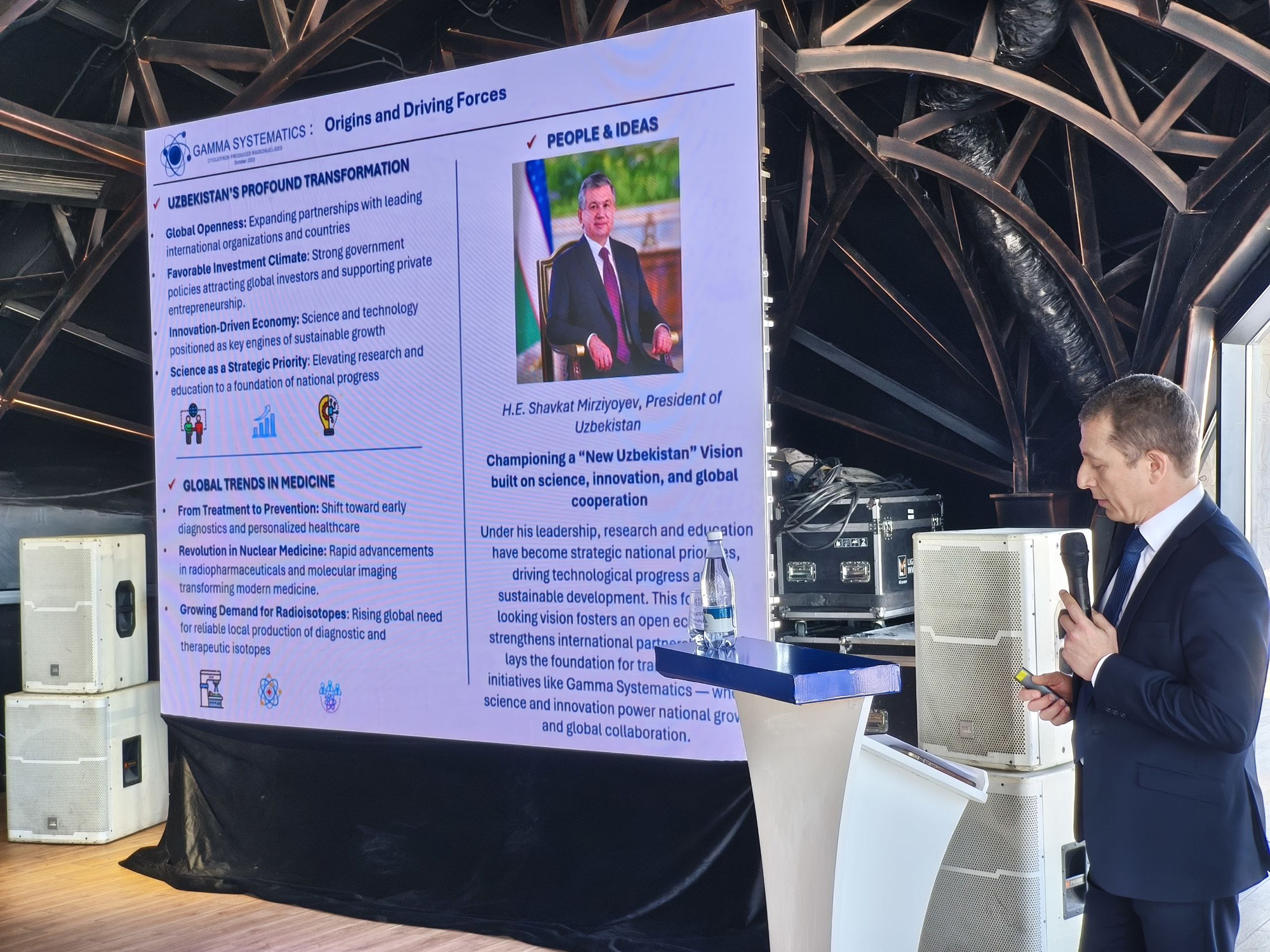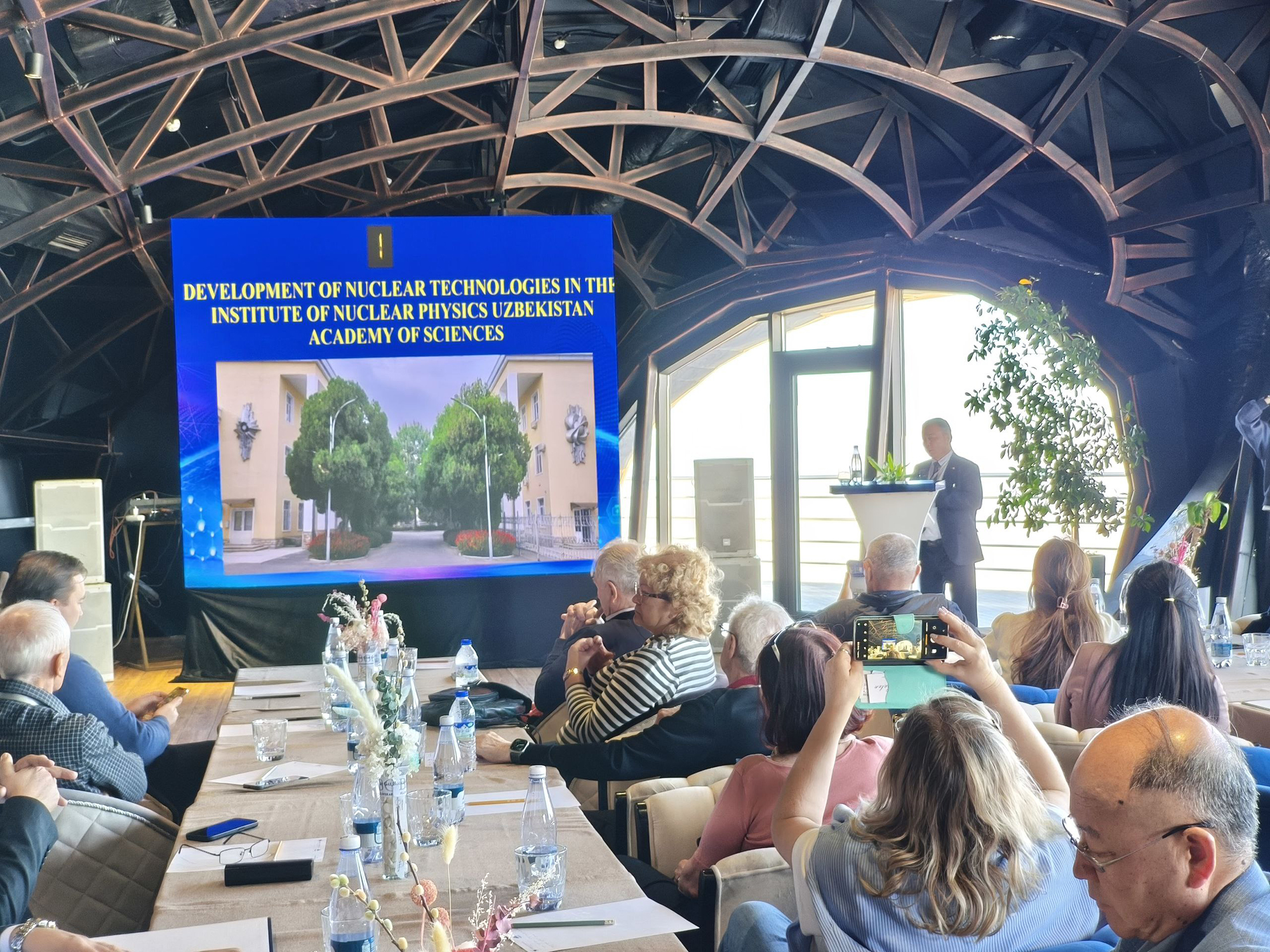Nuclear energy and technology issues discussed in Uzbekistan with JINR participation
News, 21 October 2025
From 14 to 16 October 2025, Tashkent hosted the 11th Modern Problems of Nuclear Energy and Nuclear Technologies international conference dedicated to the 80th anniversary of the birth of Academician Bekhzod Yuldashev. The event was organized by the Institute of Nuclear Physics of the Academy of Sciences of the Republic of Uzbekistan (INP AS RUz). Among participants were more than two hundred participants from 16 countries, including Italy, Kazakhstan, China, Russia, etc.
The conference topics covered the fields of theoretical and experimental physics, nuclear power engineering and nuclear technologies, radiation physics and radiation materials science, applied aspects of nuclear physics, and issues related to the modernisation of research reactors. At the opening of the conference, a documentary film prepared by the INP AS RUz was presented about the life path, scientific achievements of Bekhzod Yuldashev and his contribution to the development of nuclear physics. On 14 October, the INP hosted the unveiling ceremony of the monument to Academician Yuldashev. “During the years of his leadership, new directions appeared at the institute, new nuclear physics facilities were built, technologies for the production of radioisotope products were developed, the range of these products was expanded and exports to more than 15 countries were increased,” Director of the Institute of Nuclear Physics of the Academy of Sciences of the Republic of Uzbekistan Ilkham Sadikov highlighted.
JINR Vice-Director Latchesar Kostov noted he knew Bekhzod Yuldashev for many years as a colleague in the Committee of Plenipotentiaries of the Governments of the Member States of the Joint Institute for Nuclear Research. “Academician Yuldashev was a wonderful scientist, a bright person, and a great friend of the Joint Institute. I am proud I had a strong scientific friendship with him,” Latchesar Kostov said. In addition, the JINR Vice-Director noted that JINR and Uzbekistan are developing many joint projects. “The decision of the Republic’s government to build new nuclear power plants symbolises the transition to a qualitatively new stage of Uzbekistan’s development,” Latchesar Kostov concluded. Advisor to the Directorate of the Laboratory of Nuclear Problems at JINR Anvar Inoyatov stressed that Bekhzod Yuldashev was a pivotal figure in the development of the idea of developing nuclear energy in Uzbekistan.
Nineteen scientists from all JINR laboratories gave talks at the plenary session and in sections devoted to nuclear physics, nuclear energy and technology, modernisation of research reactors, and applied nuclear studies.
At the plenary session, Deputy Scientific Leader of the Laboratory of Nuclear Reactions Mikhail Itkis introduced the conference participants to the progress and prospects of superheavy element research. A department head at the Laboratory of Neutron Physics Aleksander Belushkin made a presentation entitled “Fundamental theories, neutrons, condensed matter, and practical applications.” Chief Researcher at the Laboratory of High Energy Physics Richard Lednicky announced the progress and plans of the BM@N Experiment on behalf of the collaboration. FLNP Deputy Director for Scientific Work Sergey Kulikov spoke about the IBR-2 Pulsed Research Reactor. A VBLHEP leading researcher Vyacheslav Zhabitsky gave a talk on monitoring beam dynamics in the synchrotrons of the NICA Accelerator Complex. FLNP JINR Deputy Director for Scientific Work Bagdaulet Mukhametuly discussed the development of neutron scattering instruments at the Institute of Nuclear Physics in Kazakhstan and the research programme in cooperation with FLNP at JINR.
Sectional talks covered the following areas:
- particle physics, including the progress of the DANSS Detector at Kalinin Nuclear Power Plant;
- neutron physics: the project of a subcritical reactor at the NICA Complex, the advantages of using different types of nuclear fuel;
- principles of operation of various devices and facilities.
In their presentations on applied research, JINR scientists highlighted the double-strand DNA break repair model, non-destructive studies of meteorites, rocks, and archaeological sites using neutron tomography, and structural analysis of materials using Raman spectroscopy.
The programme of the 11th Modern Problems of Nuclear Energy and Nuclear Technologies international conference in the mountain resort of Amirsai, Tashkent Region, included the presentation of a project to create a medical radioisotope production facility in Uzbekistan, both for domestic use and for worldwide export. The production is planned to start in the Republic by 2027. Mikhail Itkis called the isotope production for radiopharmacology one of the most important areas of applied nuclear physics. “This area has been developing for many years, and it is very important that our nuclear centres in Uzbekistan, Russia, and Kazakhstan pay significant attention to it. Today we listened to a talk about a new accelerator, set to be created at the INP RUz for these purposes,” Mikhail Itkis said.






